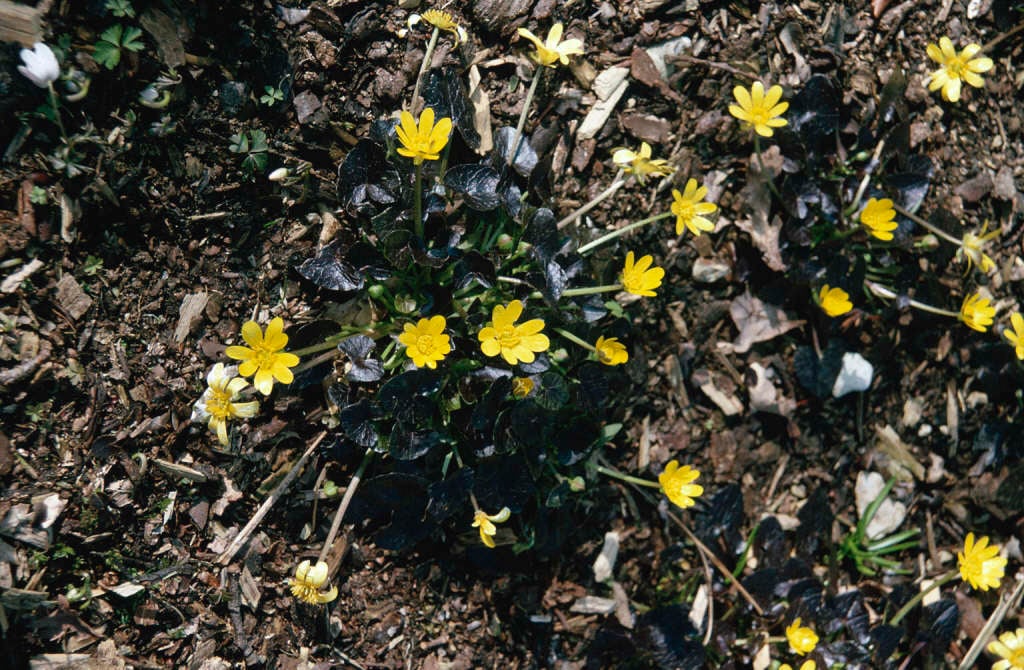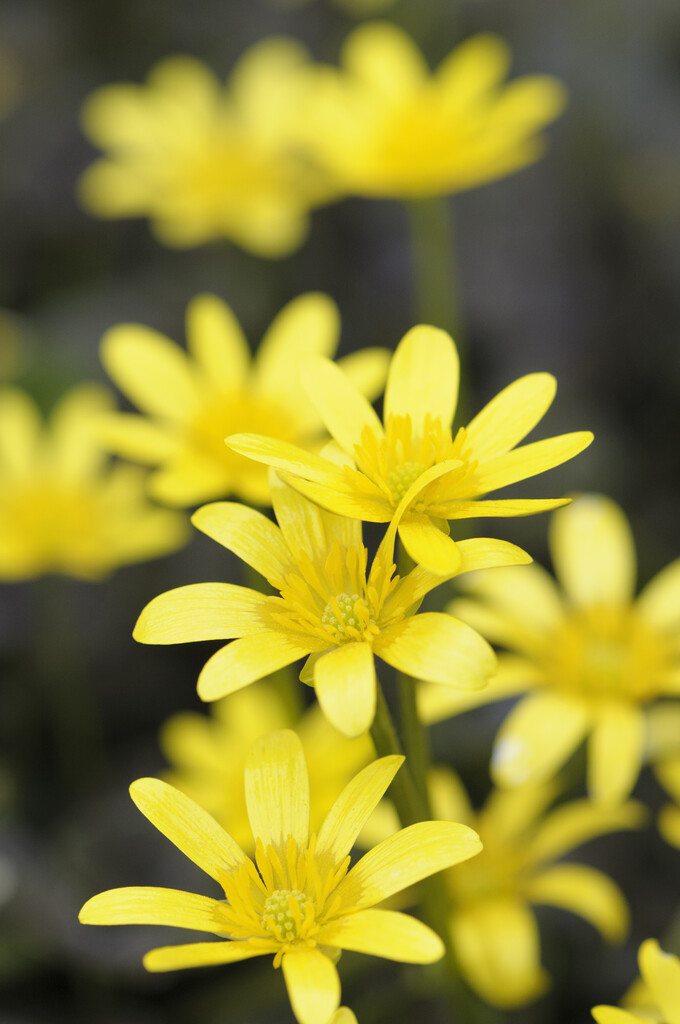Ficaria verna 'Brazen Hussy'
lesser celandine 'Brazen Hussy'
A compact tuberous rooted perennial, dying down in summer. Glossy, heart-shaped, deep blackish-bronze leaves to 5cm long contrast with bright yellow flowers 3cm wide, in early spring
Size
Ultimate height
Up to 10cmTime to ultimate height
2–5 yearsUltimate spread
0–0.1 metreGrowing conditions
Moisture
Moist but well–drainedpH
Acid, Alkaline, NeutralColour & scent
| Stem | Flower | Foliage | Fruit | |
| Spring | Yellow | Black Bronze | ||
|---|---|---|---|---|
| Summer | ||||
| Autumn | ||||
| Winter |
Position
- Full shade
- Partial shade
Aspect
North–facing or West–facing or East–facing
Exposure
Exposed or Sheltered Hardiness
H7Botanical details
- Family
- Ranunculaceae
- Native to GB / Ireland
- No
- Foliage
- Deciduous
- Habit
- Bushy
- Potentially harmful
- Harmful if eaten, skin irritant. Wear gloves and other protective equipment when handling
- Genus
Ficaria is a relatively small genus of European herbs. It is closely related to buttercups (Ranunculus) and is sometimes included within that genus
- Name status
Accepted
How to grow
Cultivation
Grow in partial or full shade in moist, humus-rich soil. A good early source of pollen and nectar for insects, though plants can spread and have potential to become a nuisance if not controlled. See celandine cultivation
Propagation
Divide, or detach basal bulbils in spring or autumn. Propagate by seed as soon as it is ripe, in a cold frame; cultivars will not come true from seed
Suggested planting locations and garden types
- Cottage and informal garden
- Patio and container plants
- Rock garden
- City and courtyard gardens
- Coastal
- Flower borders and beds
- Garden edging
Pruning
No pruning required
Pests
Diseases
May be susceptible to powdery mildews
Love gardening
Sign up to receive regular gardening tips, inspiration, offers and more
View our Privacy Policy
Get involved
The Royal Horticultural Society is the UK’s leading gardening charity. We aim to enrich everyone’s life through plants, and make the UK a greener and more beautiful place.

